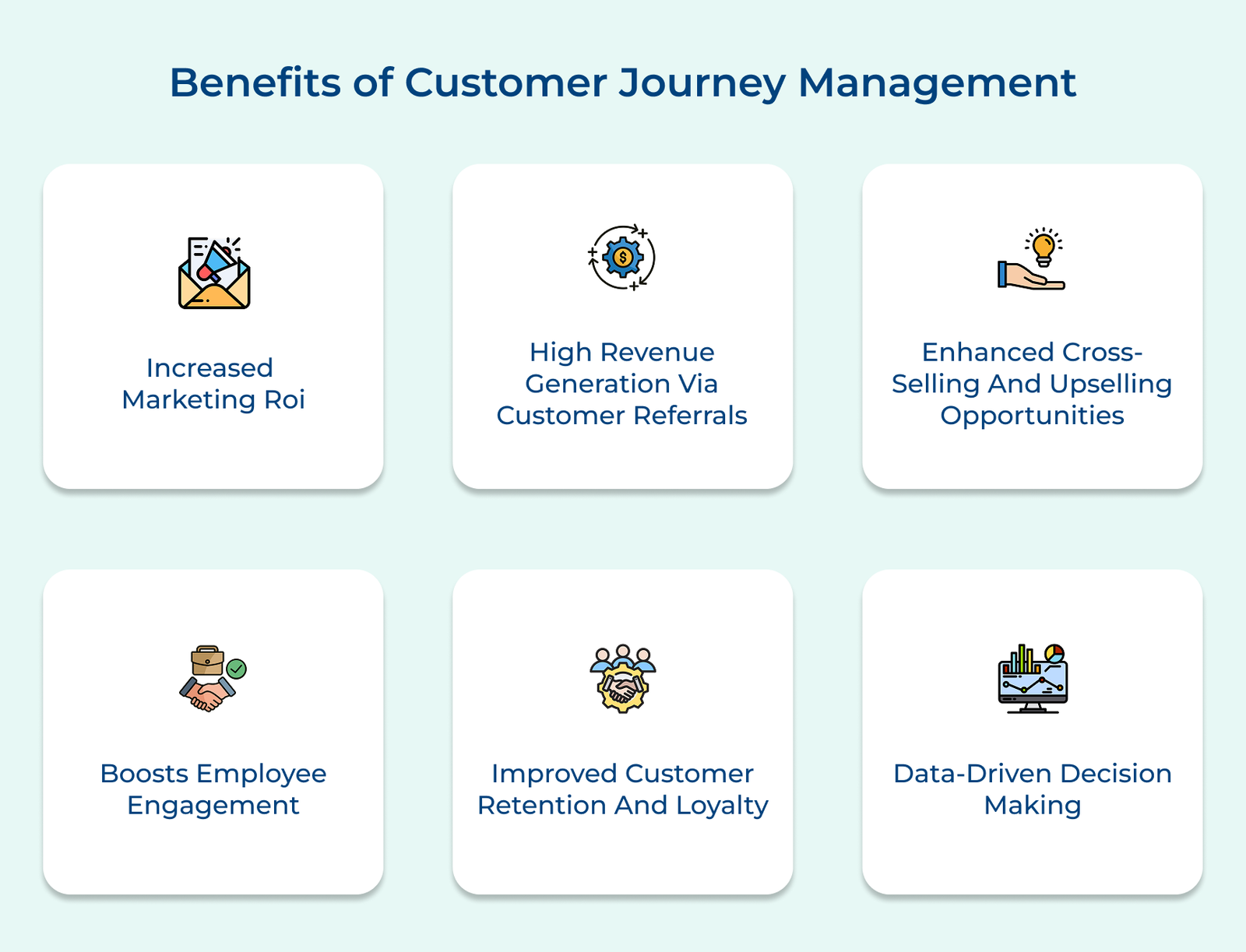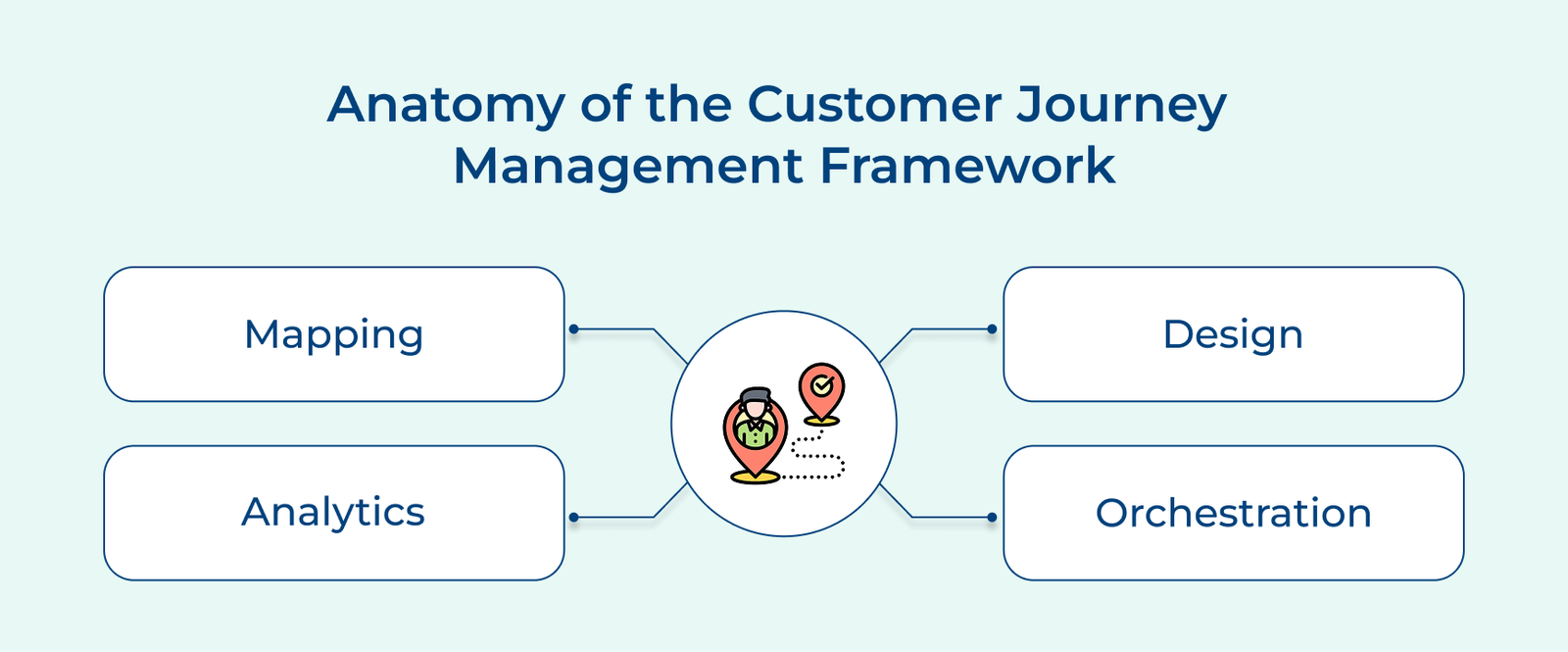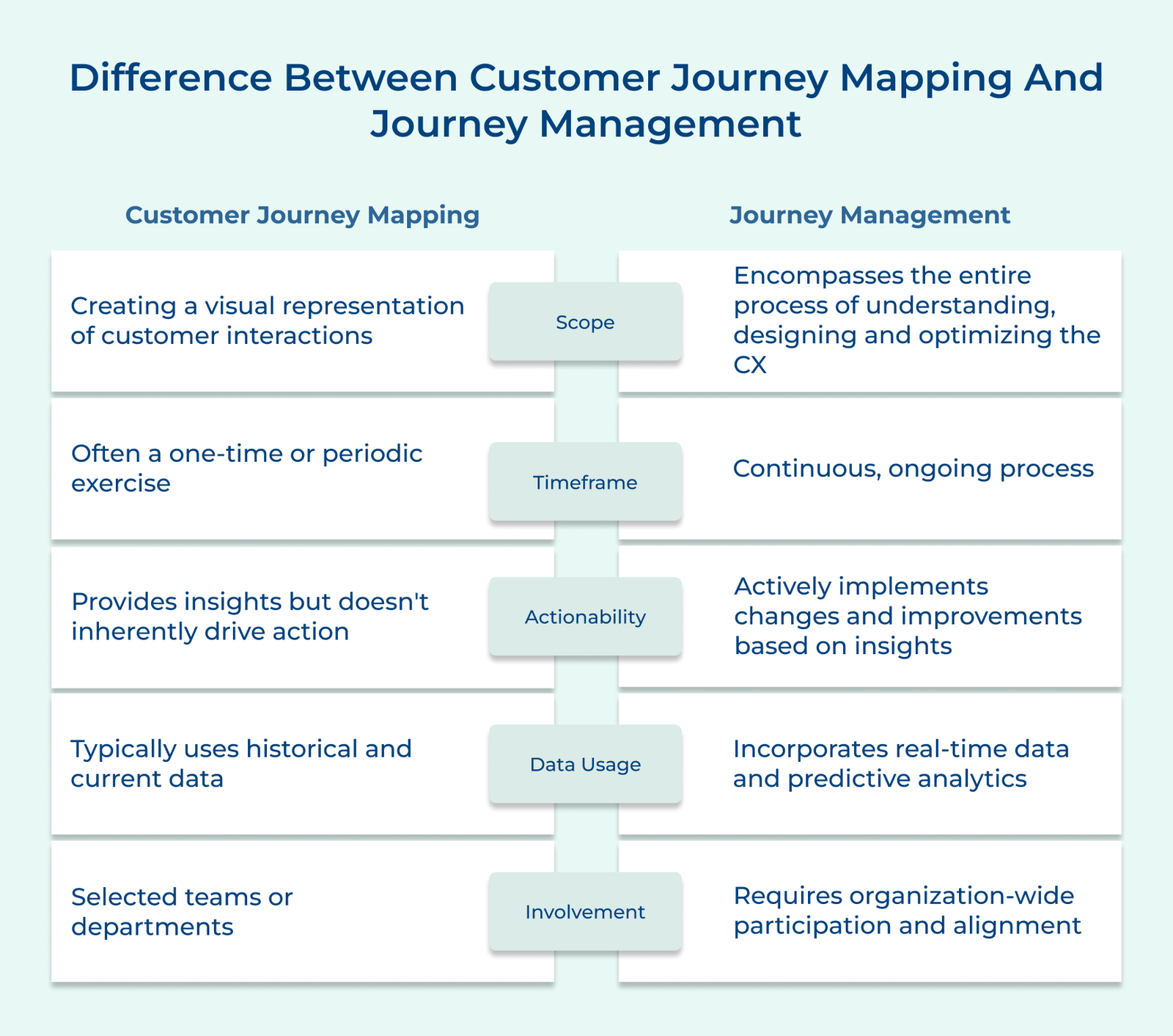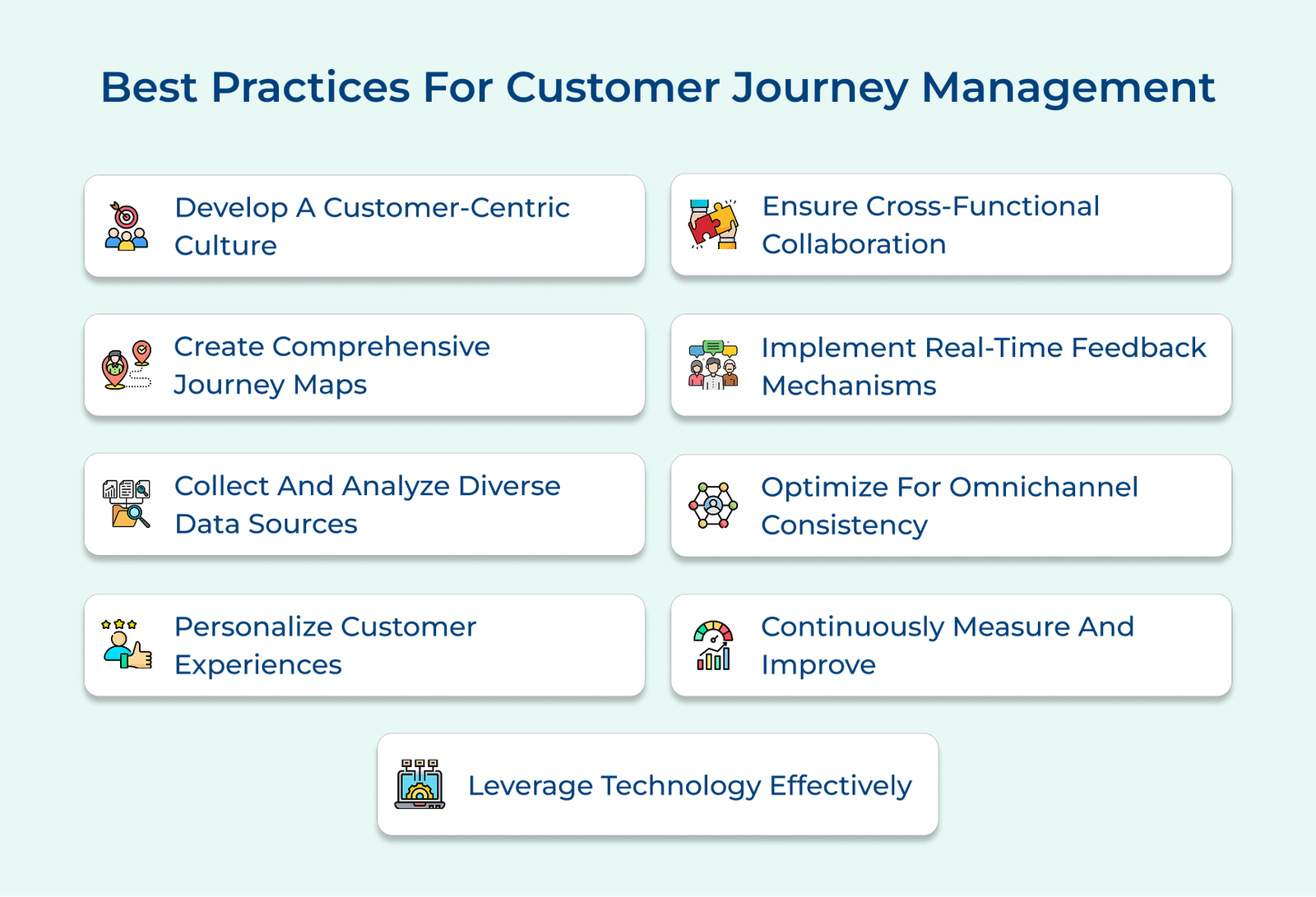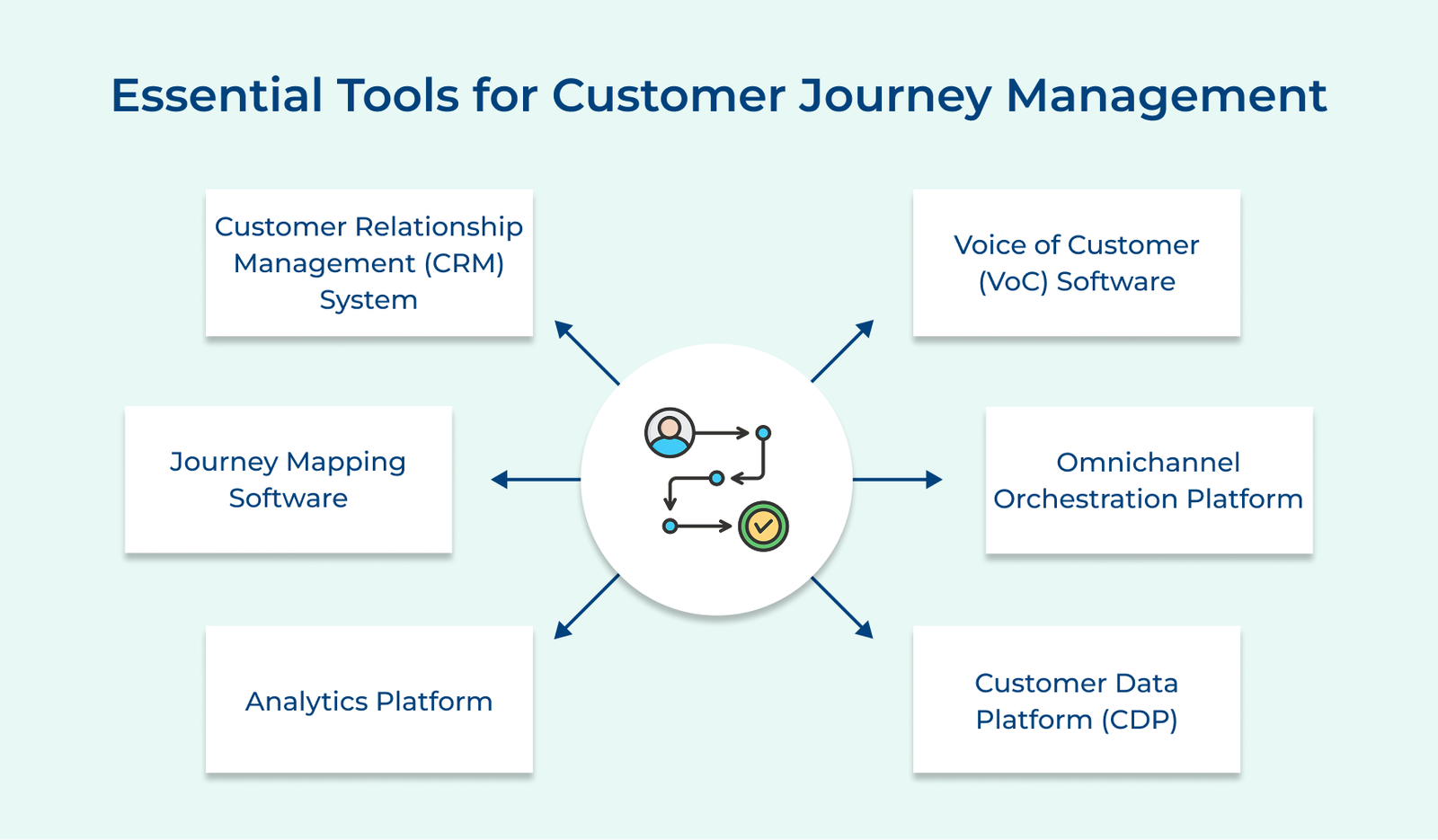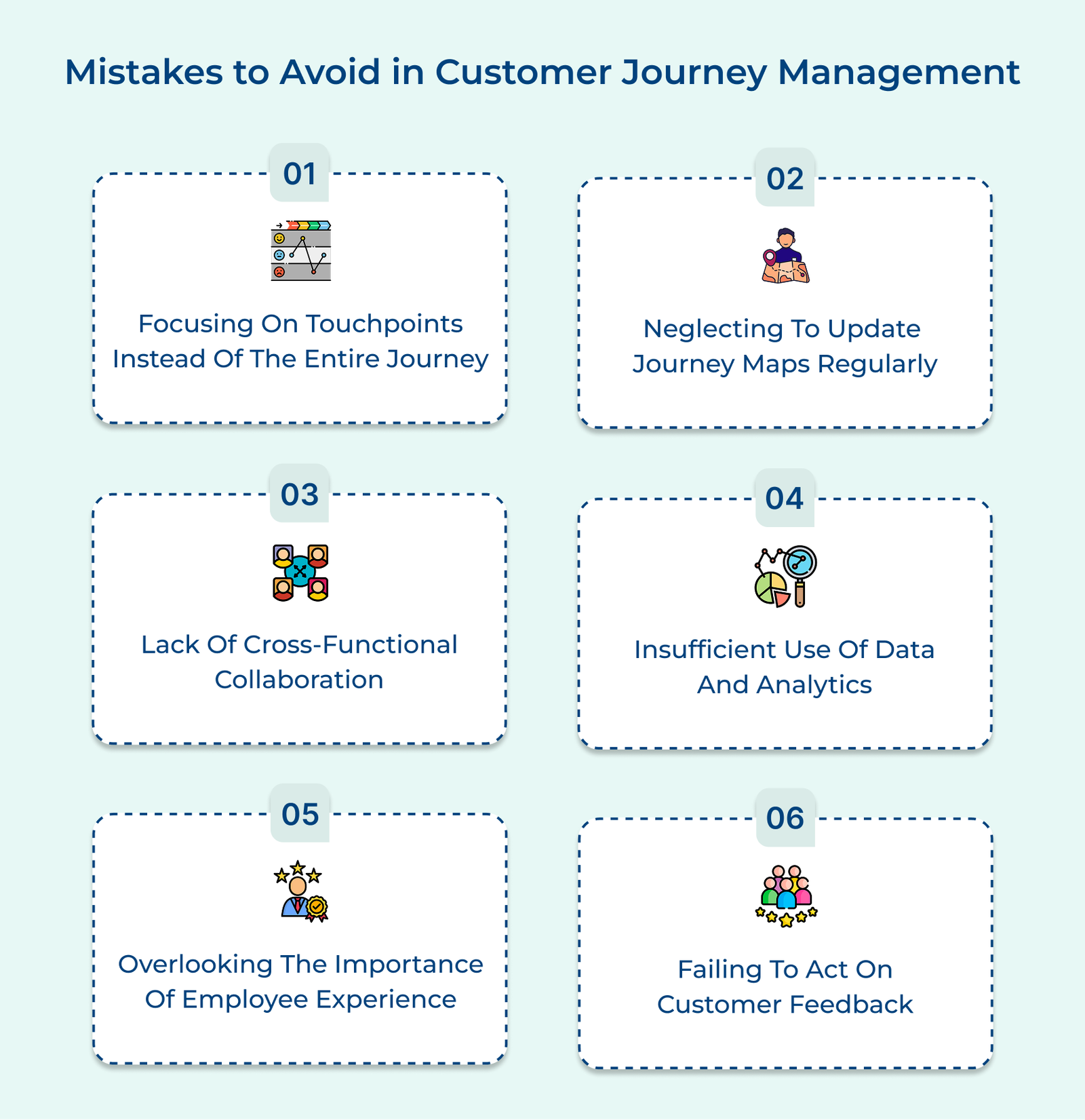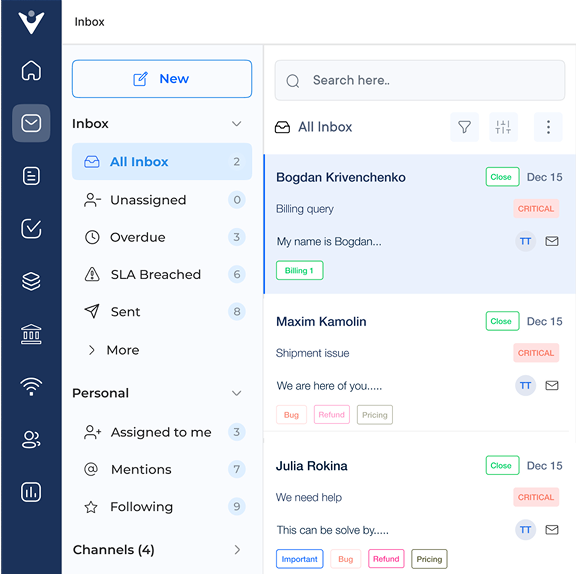1. Focusing On Touchpoints Instead of The Entire Journey
Many organizations tend to optimize individual touchpoints, overlooking the broader customer journey. The narrow focus can result in fragmented experiences and missed opportunities for improvement.
Instead, embrace a holistic approach to journey management. Map out the entire customer journey, including all touchpoints and their transitions. The comprehensive perspective helps you identify pain points and create a seamless, cohesive experience across all interactions.
2. Neglecting to Update Journey Maps Regularly
Customer behaviors and market conditions evolve rapidly, making static journey maps obsolete and leading to misaligned strategies. Many organizations underestimate the importance of regularly updating these maps.
Establish a systematic process for reviewing and refreshing your journey maps. Schedule quarterly or biannual reviews with cross-functional teams and incorporate real-time data . It ensures your maps stay accurate and relevant, enabling timely adjustments to your strategies.
3. Lack of Cross-Functional Collaboration
Siloed departments can create fragmented customer experiences. When teams focus only on their specific areas, it often leads to inconsistent or conflicting interactions throughout the journey.
Encourage collaboration by forming cross-functional teams dedicated to journey management. Set shared KPIs that promote teamwork toward common customer-centric goals. Regular inter-departmental meetings will help align strategies and ensure a cohesive approach to the customer journey.
4. Insufficient Use of Data And Analytics
Many organizations gather extensive customer data but struggle to analyze and act on it, missing out on valuable personalization opportunities.
Invest in powerful analytics tools and develop data-driven strategies. Equip teams with training to effectively utilize the tools and interpret insights. A centralized data platform that integrates information from various sources enables comprehensive analysis and informed decision-making in journey management.
5. Overlooking The Importance of Employee Experience
Organizations often overlook the vital link between employee experience and exceptional customer journeys. Disengaged or untrained employees can negatively affect customer interactions.
Understand that employee experience directly impacts customer experience. Invest in training, empowerment, and engagement initiatives to equip employees with the tools they need to excel at every touchpoint in the journey.
6. Failing to Act On Customer Feedback
Many organizations collect customer feedback but struggle to turn it into actionable improvements, resulting in repeated issues and frustrated customers.
Create a closed-loop feedback system to ensure that customer input drives real change. Establish clear processes for prioritizing feedback and communicate regularly with customers about how their insights are being used to enhance their journey.
What are some Customer Journey Management Examples?
Here are five real-life examples of brands that have successfully implemented customer journey management strategies:
1. Starbucks
Starbucks has crafted a seamless omnichannel experience through its mobile app, integrating mobile ordering, payments and a loyalty program. Customers can order ahead, skip the lines and earn rewards, creating a smooth journey from order to pickup.
The strategy fueled significant growth: mobile orders made up 26% of U.S. company-operated transactions in Q1 2021 and the Starbucks Rewards program reached 22.9 million active members—up 15% year-over-year. The initiatives not only enhanced customer satisfaction but also boosted sales and retention.
2. Amazon
Amazon excels in personalization within customer journey management, leveraging advanced algorithms to analyze browsing and purchase history for tailored product recommendations. Features like “1-Click” ordering and Prime membership enhance the purchasing experience.
The commitment to personalization has cultivated strong customer loyalty and impressive growth, with Amazon Prime hitting 200 million subscribers worldwide in 2020. Personalized recommendations are estimated to account for 35% of total sales, highlighting the significant impact of a well-managed customer journey on revenue.
3. Disney
Disney transformed guest experiences in its theme parks with the MagicBand technology. The wearable devices function as hotel keys, photo storage and payment methods, while tracking guest movements for personalized interactions.
The initiative has greatly boosted guest satisfaction and spending, contributing to a remarkable 20% increase in park revenue in the years following MagicBand’s launch. It has provided Disney with valuable data to further optimize park operations.
4. Netflix
Netflix leads in customer journey management with its advanced recommendation engine, which analyzes viewing history and preferences to create a personalized content discovery experience. The platform continually refines its user interface based on the habits, enhancing the browsing experience.
The focus on personalization has been pivotal to Netflix’s success, with the company estimating that its recommendation system saves $1 billion annually in customer retention. Remarkably, 80% of viewer activity is driven by personalized recommendations, showcasing how effective journey management boosts engagement and reduces churn.
5. Sephora
Sephora has crafted a seamless online and offline customer journey with its “Beauty Insider” loyalty program, linking in-store and online purchases while offering personalized recommendations across all channels. They’ve also integrated augmented reality in their app, enabling customers to virtually try on products.
The omnichannel strategy has fueled impressive growth, with over 25 million Beauty Insider members responsible for about 80% of annual sales. The virtual try-on feature has driven significant engagement, with users trying on over 200 million shades in its first year.
Transform Interactions Into Lasting Relationships With Customer Journey Management
Customer journey management is vital, turning fragmented interactions into cohesive, meaningful experiences that enhance loyalty and satisfaction. Businesses can build lasting relationships that extend beyond individual transactions by addressing the entire journey.
Effective journey management fuels growth and ROI by increasing customer retention and lifetime value while optimizing marketing spending. Companies can lower acquisition costs, improve conversion rates and encourage repeat purchases by personalizing experiences.






